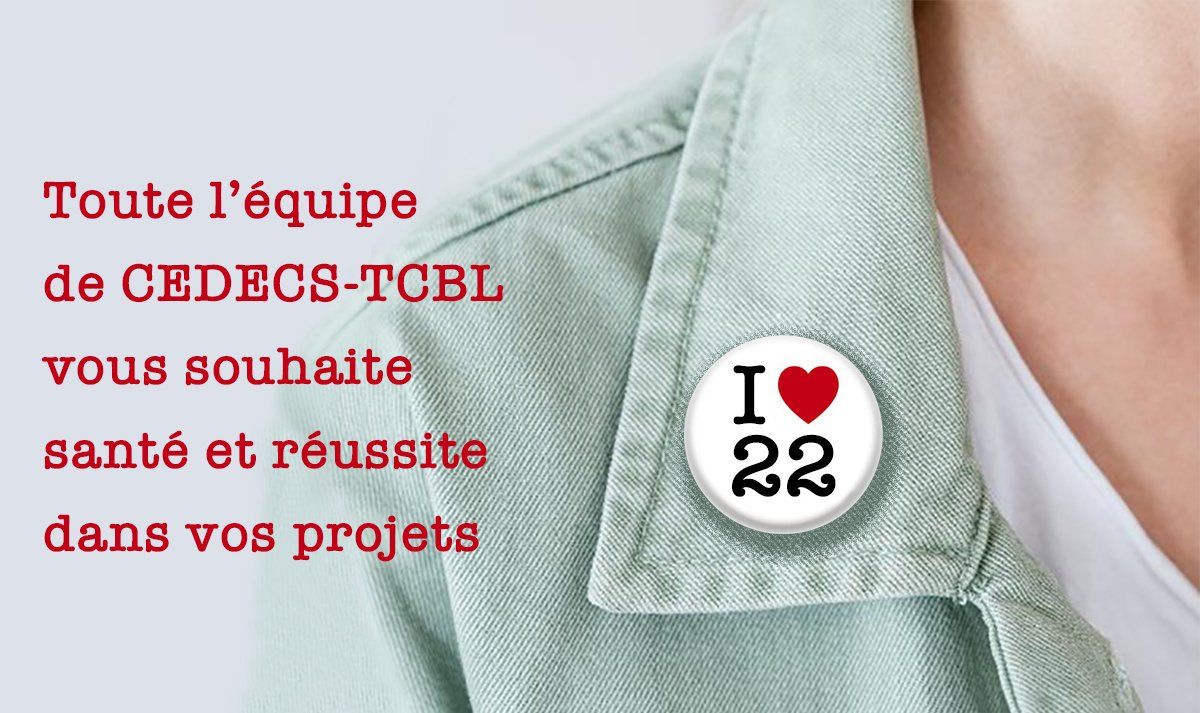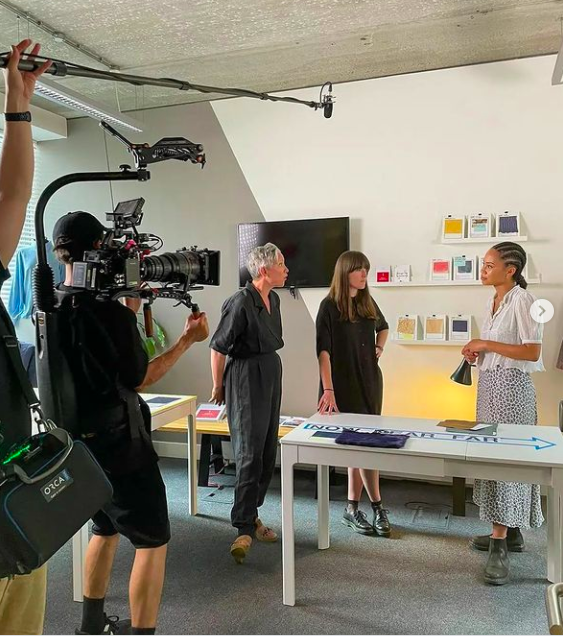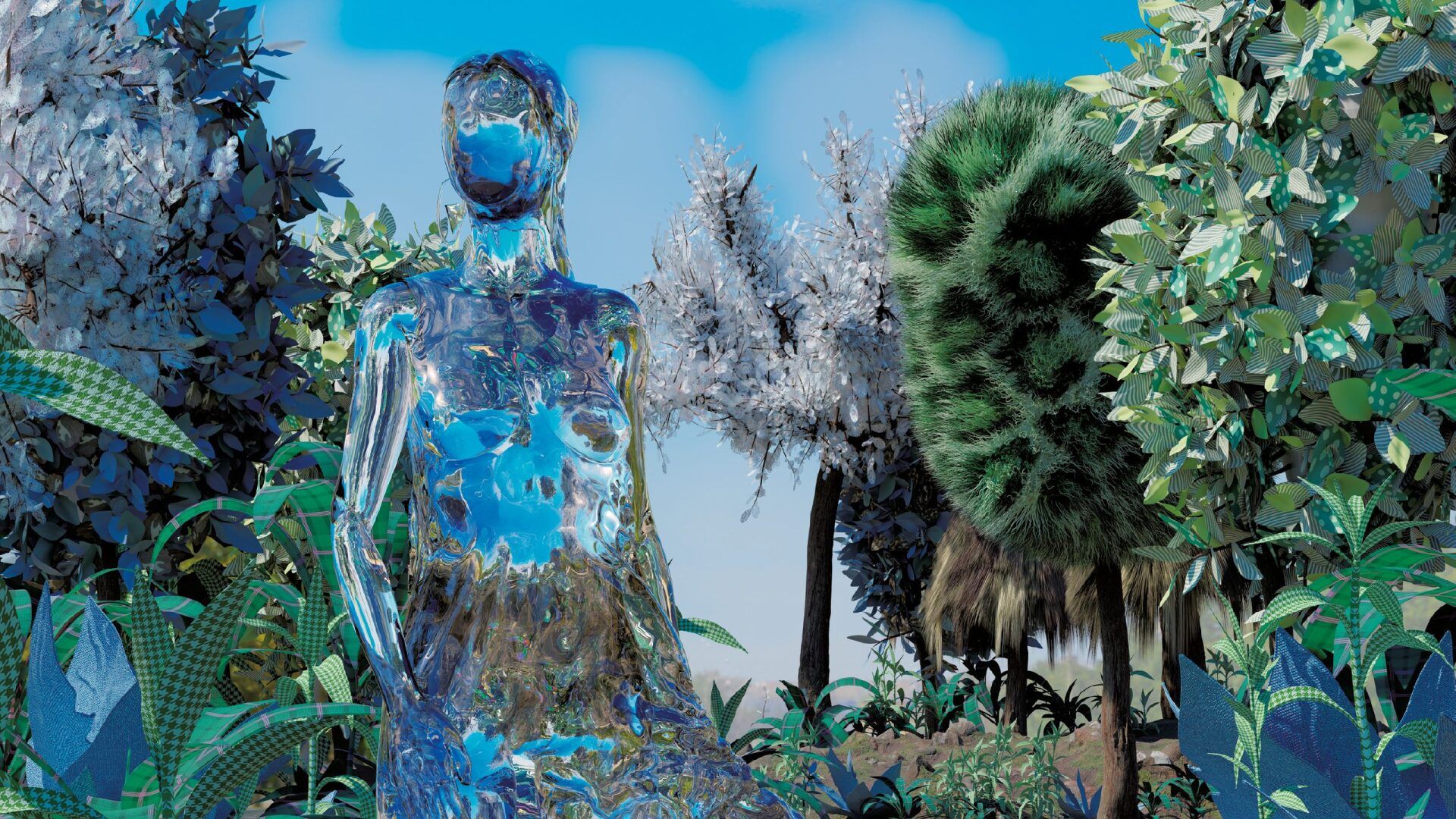NEWSLETTER
N°7 JANUARY 2022

shemakes
The shemakes community, great!
Thank you for your participation in our call for projects shemakes ! We received more than 80 applications, of which almost 70 passed the selection threshold with 12 selected. These are 18 European laboratories which today constitute the driving force of the Shemakes community. Stay in touch with us for future information or adventures, because this community aims to be sustainable, like all those we build in TCBL.
For more information:
HEREWEAR
Would you like to receive the specific Herewear project newsletter?
Register on the Herewear community page, a community engaged in research on a new sector based on bio-sourced, local fibers and which favor a new generation circular economy, which both recycles and regenerates.
For more information: www.herewear.eu/news
TCBL
Are you also questioning the textile sector again?
A new solution begins with a relevant question, whether that principle is borrowed from Einstein or the Japanese method of Five whys. But how do you identify the right question? In textiles, paradigm shifts are necessary, to move from a model of over-consumption to a model of fair consumption, from an economic system in silos to an economic system in a value chain, from the obligation of profitability short-term financial obligation to long-term obligation. Do you want to share your surprises, your questions or do you have specific information needs? Contact us by returning this email.
Thank you, you are great readers.
Launched just before summer, the Cedecs – TCBL newsletter was tested every two months, then every month from September 2021. Thank you for increasing numbers of people following us. We of course have plenty of ideas for developing this newsletter, but it is your suggestions that will be our best guides to guide our choices. Do not hesitate to send us your comments or suggestions by return of this email..
####ShortCuts
Clothing is political
Women's loincloths swing on clotheslines to face the Burmese army. Demonstrators wear Pussy hats fuchsia pink to demonstrate against the Weinstein affair. Serena Williams wears a black tutu designed by (the late) Virgil Abloh to play an international match. These are some recent examples of the power of clothing to take a stand on a societal issue. Adolescents know this well, who adopt looks very different from those of their parents, to continue growing. Second-hand clothing buyers too, who prefer clothes already worn and in very good condition rather than new clothes produced in a fast fashion industry, destructive for the planet and the quality of life for those who live there.
####ShortCuts
Textile and food, same fight
At the house of Patagonia, the job is also to act to protect the environment, biodiversity and the human beings who live on this planet. Based on its experience of organic cotton production and the systemic effects it causes, Patagonia offers new models of food production, for example free-range hens which produce good eggs, help us rediscover the taste for eating well and contribute to maintaining healthy pastures that capture carbon and regenerate biodiversity. Developing systems on a multi-local scale to automatically regenerate our production and consumption is this type of intervention strategy that also inspires us in the textile sector at TCBL.
####ShortCuts
Recycling carbon monoxide into polyester ingredient
The startup Lanzatech invented a new process which makes it possible to capture carbon in the air (from a polluting company for example), to have it transformed by bacteria into ethanol, from which monoethylene glycol, one of the components of polyester, is extracted ( up to 20%). Zara tested it with an evening dress Lululemon for yoga outfits and We for running shoe foams. It is a recycling solution that reduces pressure on the planet's fossil fuels.
####ShortCuts
Fashion consumption tomorrow?
Spending long periods of time living and working at home has accelerated the awareness of the futility of some of our expenses. Budgets clothes have reduced, under the effect of the reduced need for variety, formal outfits or designer clothing to wear in a performance situation. This de-consumption has already been observed numerous times during the crises of the 20th century. century. There are two opposing opinions about what will happen next. For some, conspicuous consumption will rebound, like the Dior phenomenon which followed the deprivations of the Second World War; for others, de-consumption will last, which will encompass both strict de-consumption (buying less) and ephemeral – sustainable consumption strategies (buying, wearing and reselling/bartering).
####MyTextileLinks
After New York and Los Angeles, Detroit wishes to become the third American city renowned for its fashion district, by making ethical fashion its spearhead
The Raw Color studio, based in Eindhoven, uses color as a symbol of climate change in its Temperature Textiles collection, launched in conjunction with COP26 and Dutch Design Week
Mushrooms are revolutionary and, apart from food, make it possible to produce clothing, accessories and furniture without fossil energy
####MonAgendaTextile
Measurement / Excess
Jean Lurçat Tapestry Museum in Angers
Until May 22, 2022
Results of the international research, creation and innovation competition for miniature objects inspired by thread.
Important textile fairs in France:
Texworld
From February 7 to 9, 2022
First Vision
From February 8 to 10, 2022
European textile fairs









